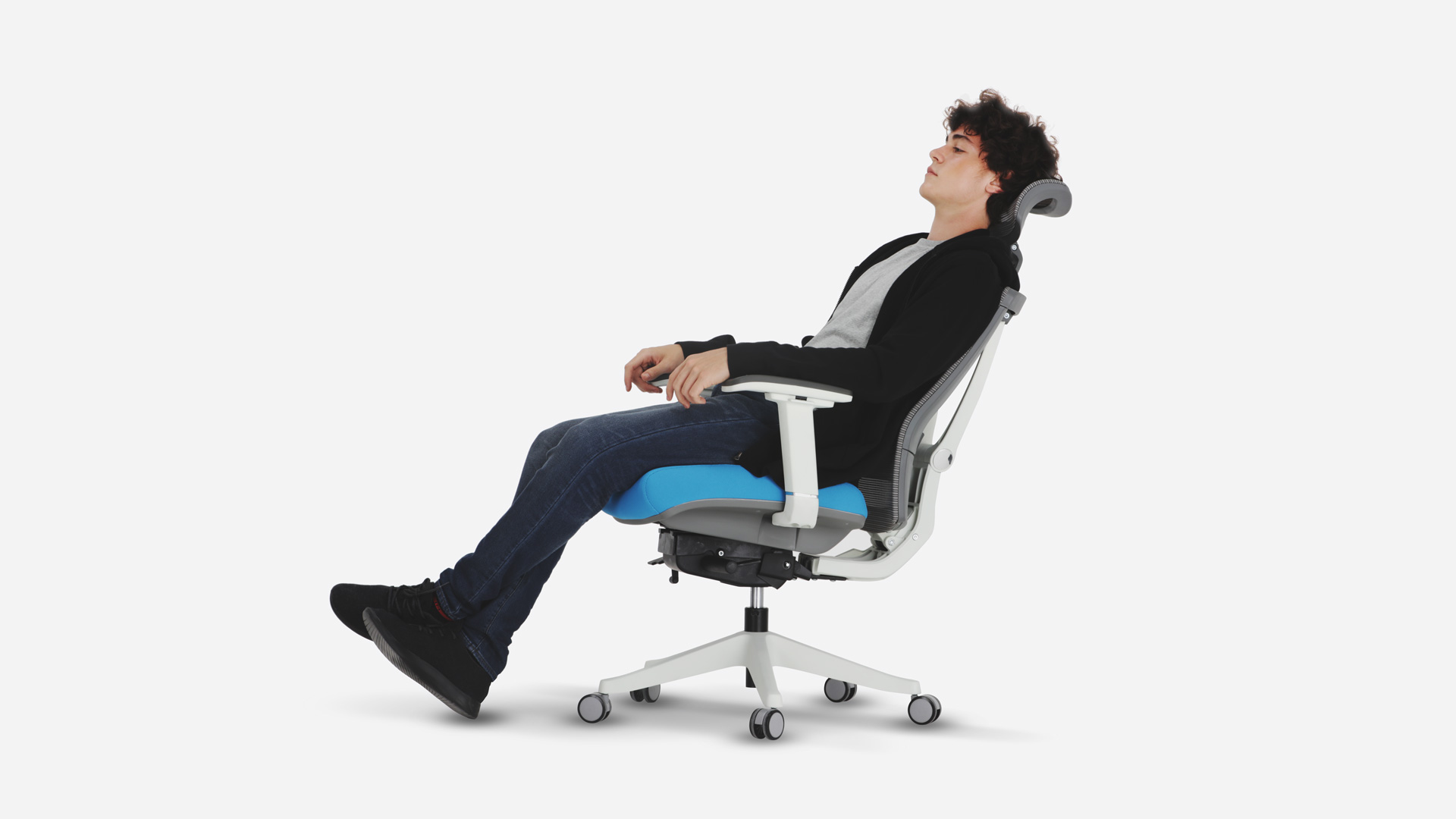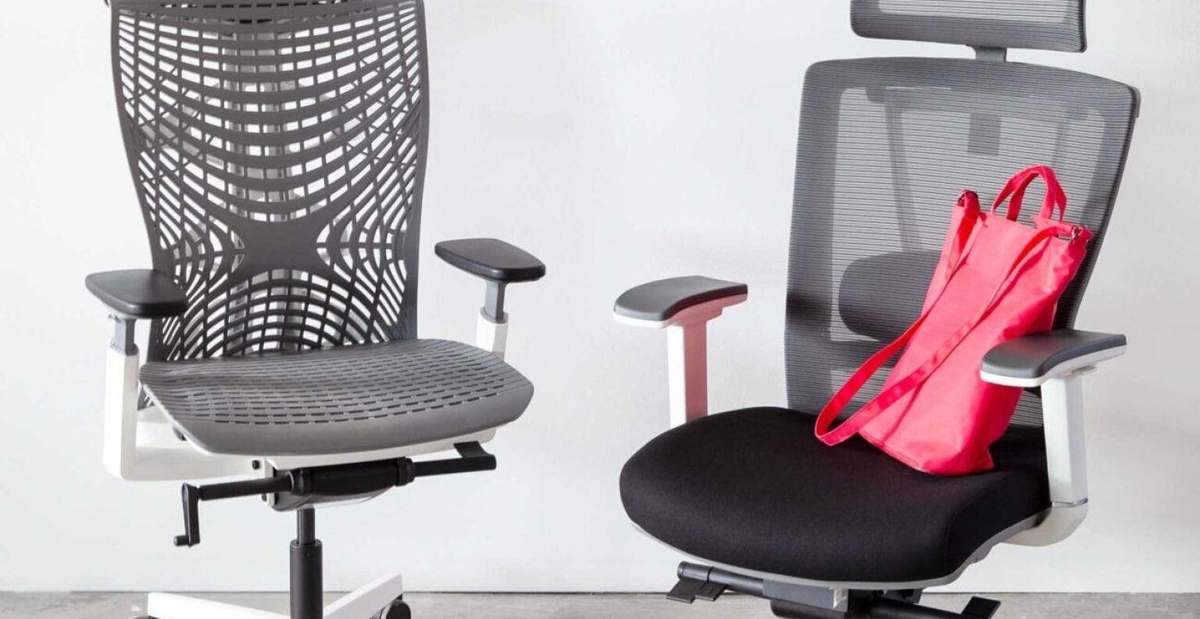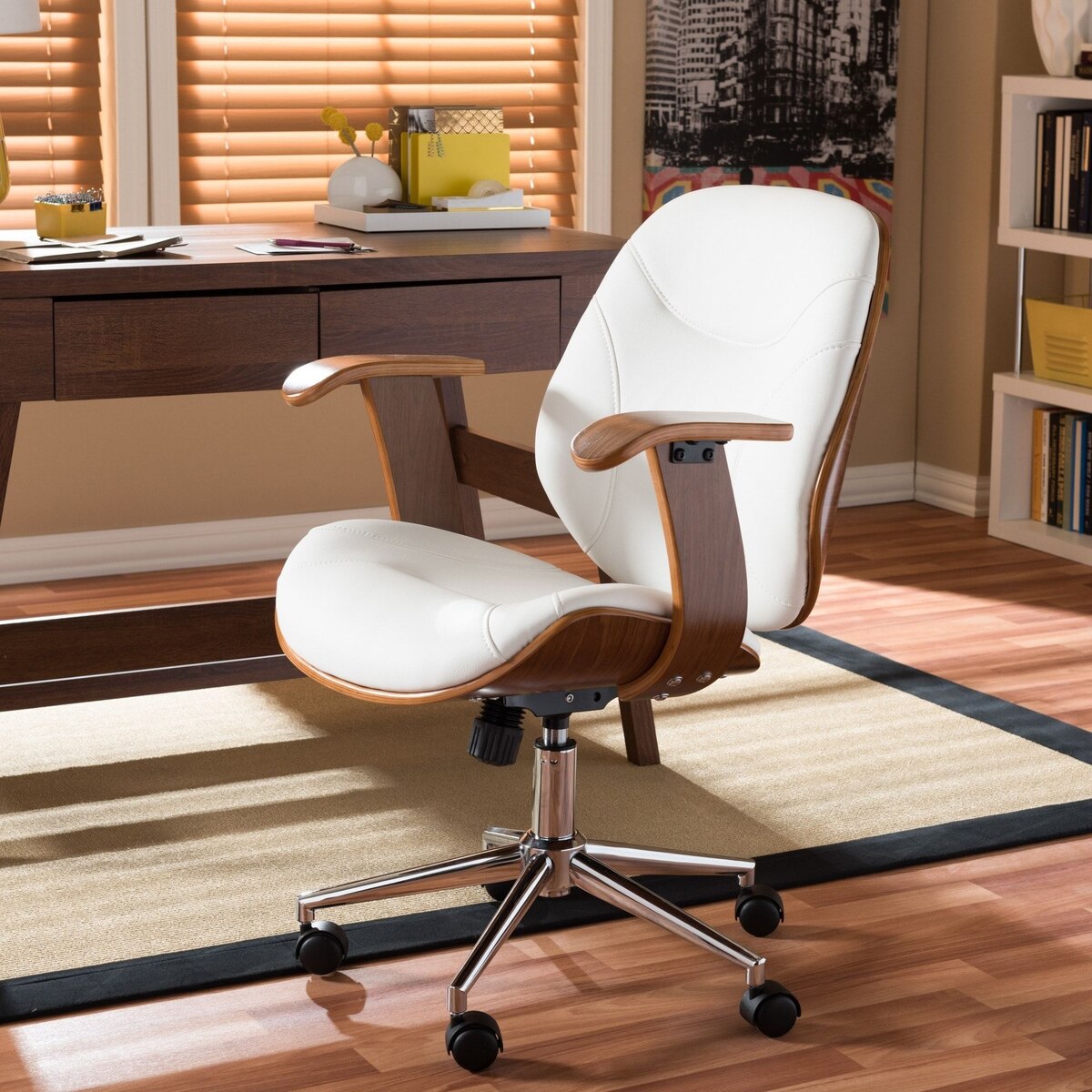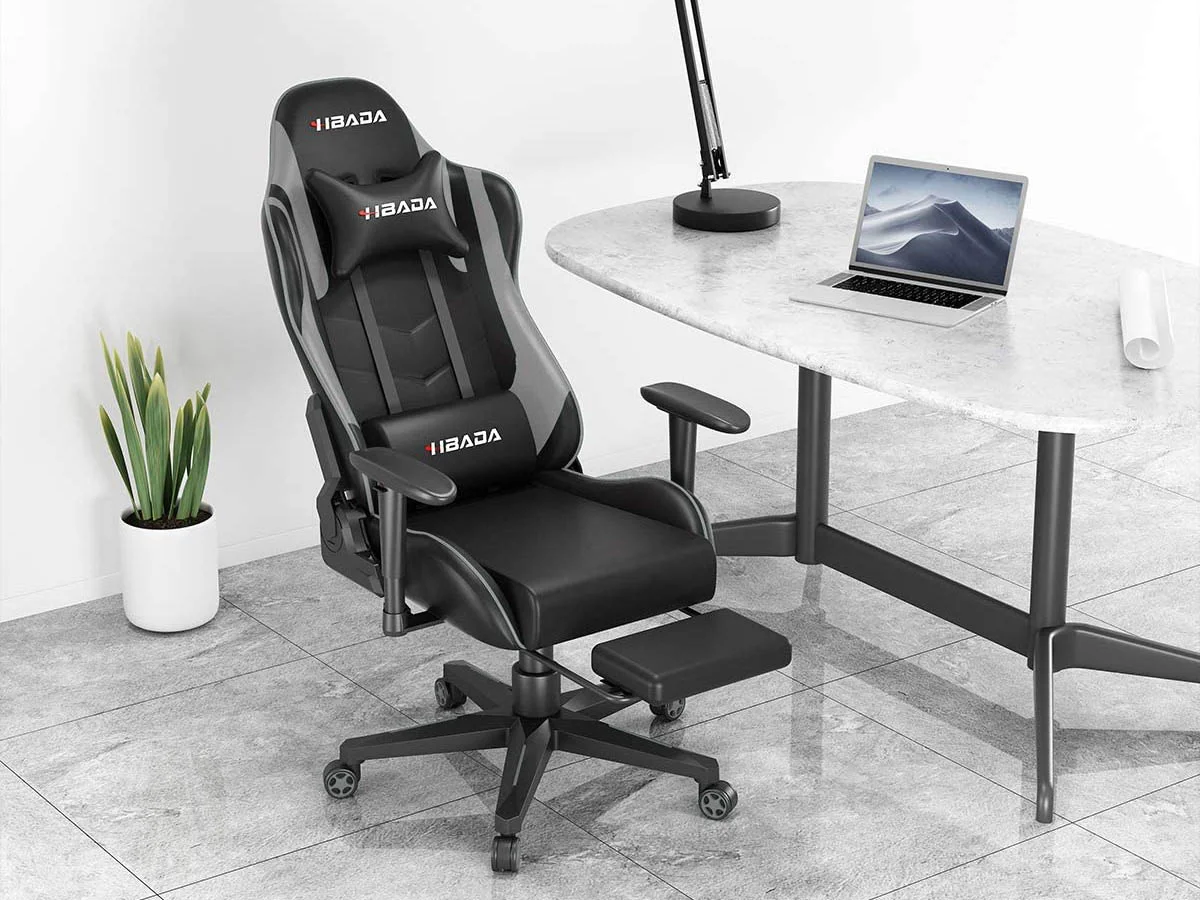Home>Furniture & Design>Office Furniture>How To Pick A Good Office Chair


Office Furniture
How To Pick A Good Office Chair
Modified: October 18, 2024
Learn how to choose the perfect office chair with our expert tips and advice. Find the best office furniture and design for your workspace. Discover the key features to look for in office chairs.
(Many of the links in this article redirect to a specific reviewed product. Your purchase of these products through affiliate links helps to generate commission for Storables.com, at no extra cost. Learn more)
Introduction
Welcome to the world of office furniture and design! When it comes to creating a productive and comfortable workspace, one of the most crucial elements is the office chair. Whether you're setting up a home office or outfitting a corporate workspace, selecting the right office chair is paramount. This article will guide you through the process of choosing a good office chair, covering everything from the importance of a quality chair to the key factors to consider and the various types available.
Your office chair is not just a piece of furniture; it's where you'll spend a significant portion of your day. A good chair can contribute to your health, productivity, and overall well-being, while a poor-quality chair can lead to discomfort, fatigue, and even long-term health issues. With this in mind, it's essential to approach the selection of an office chair with care and consideration.
In the following sections, we'll delve into the critical aspects of office chair selection, including ergonomics, adjustability, durability, and style. By the end of this article, you'll be equipped with the knowledge and insights needed to make an informed decision and find the perfect office chair that caters to your specific needs and preferences. Let's embark on this journey to discover the art and science of choosing a good office chair!
Key Takeaways:
- Choosing a good office chair is crucial for comfort, productivity, and long-term health. Consider factors like ergonomics, adjustability, and durability to find the perfect chair that suits your needs and style.
- Different types of office chairs cater to specific tasks and preferences. Prioritize comfort, support, and personal style to create a workspace that promotes well-being and professionalism.
Read more: How To Sit In An Office Chair
Importance of a Good Office Chair
The significance of a good office chair cannot be overstated. Considering the amount of time spent sitting while working, the quality of the chair directly impacts comfort, posture, and overall well-being. Here are some key reasons why a good office chair is essential:
- Comfort and Productivity: A comfortable chair promotes better focus and productivity. When you're at ease, you can concentrate on your tasks without being distracted by discomfort or pain.
- Posture Support: An ergonomic chair provides proper lumbar support and encourages a healthy sitting posture, reducing the risk of back and neck strain.
- Health Benefits: A well-designed chair can help prevent musculoskeletal issues and alleviate existing discomfort associated with prolonged sitting.
- Long-Term Wellness: Investing in a good chair is an investment in your long-term health. By prioritizing comfort and support, you can mitigate the potential negative effects of extended sitting.
- Professional Image: In a professional setting, an aesthetically pleasing and well-designed chair contributes to a polished and professional environment, leaving a positive impression on clients and visitors.
Ultimately, a good office chair is not just about physical comfort; it also influences your mental and emotional well-being. By choosing a chair that aligns with your body's needs and your personal style, you can create a workspace that enhances your overall work experience. Now that we understand the importance of a quality office chair, let's explore the essential factors to consider when selecting one.
Factors to Consider When Choosing an Office Chair
When embarking on the quest for the perfect office chair, several crucial factors should guide your decision-making process. By carefully evaluating these aspects, you can ensure that the chair you select aligns with your specific needs and preferences. Let’s explore the key considerations:
- Ergonomics: Prioritize chairs designed with ergonomic features that support the natural curve of the spine, promote healthy posture, and reduce the risk of musculoskeletal issues.
- Adjustability: Look for chairs with adjustable seat height, armrests, and lumbar support to accommodate various body types and sitting preferences.
- Comfort: Assess the padding, fabric, and overall design to ensure that the chair provides ample comfort for extended periods of sitting.
- Durability: Consider the quality of materials and construction to ensure that the chair is durable and built to withstand daily use over an extended period.
- Style: While functionality is paramount, the chair’s aesthetic should complement your workspace and personal taste, contributing to a cohesive and visually appealing environment.
- Support and Stability: Evaluate the chair’s base, casters, and swivel mechanism to ensure stability and smooth mobility, especially on various flooring surfaces.
- Price and Value: Balance your budget with the chair’s features and quality to find a suitable option that offers long-term value and meets your requirements.
By carefully considering these factors, you can narrow down the vast array of office chair options and pinpoint the ones that best suit your individual needs. Now that we’ve outlined the critical considerations, let’s delve into the different types of office chairs available to cater to various work environments and preferences.
Types of Office Chairs
Office chairs come in a diverse range of styles, each tailored to specific needs and work environments. Understanding the various types can help you identify the most suitable chair for your workspace. Here are some common types of office chairs:
- Task Chairs: These chairs are designed for desk-based tasks, featuring swivel functionality, adjustable height, and often armrests. They are versatile and suitable for various office settings.
- Executive Chairs: Typically larger and more luxurious, executive chairs exude a professional and authoritative aesthetic. They often feature high backs, ample padding, and premium materials.
- Mesh Chairs: Known for their breathability and modern appearance, mesh chairs offer excellent airflow and are ideal for those working in warm environments or for individuals prone to perspiration.
- Conference Chairs: These chairs are designed for meeting rooms and conference spaces. They are often sleek, minimalistic, and lightweight for easy maneuverability.
- Guest Chairs: Intended for visitors and guests, these chairs prioritize comfort and aesthetics, offering a welcoming seating option for office guests.
- Ergonomic Chairs: Focused on optimal support and adjustability, ergonomic chairs are designed to promote healthy posture and reduce the risk of strain and discomfort during extended periods of sitting.
- Ball Chairs: Utilizing a large exercise ball as the seat, these chairs engage core muscles and promote active sitting, making them a popular choice for individuals seeking an alternative to traditional office chairs.
- Drafting Chairs: With extended height and a foot ring, drafting chairs are suitable for work surfaces higher than a typical desk, such as drafting tables or standing desks.
Each type of office chair serves a distinct purpose, catering to specific tasks, preferences, and work environments. By understanding the characteristics of these chairs, you can narrow down your options and select the type that best aligns with your professional and personal needs. As we continue our exploration, we’ll delve into the crucial aspects of ergonomics and comfort in office chairs.
Ergonomics and Comfort
When it comes to office chairs, ergonomics and comfort are paramount considerations that directly impact your well-being and productivity. Understanding the ergonomic features and comfort elements of a chair is essential in making an informed decision. Let’s delve into these crucial aspects:
Ergonomics: A chair with ergonomic design prioritizes the natural alignment of the body, particularly the spine, to reduce strain and promote healthy posture. Key ergonomic features include:
- Adjustable Lumbar Support: Proper lumbar support maintains the natural curve of the lower spine, reducing pressure and preventing slouching.
- Adjustable Armrests: Height-adjustable and padded armrests support the arms and shoulders, reducing tension and promoting a relaxed posture.
- Seat Depth and Width: Adequate seat depth and width ensure proper weight distribution and prevent pressure on the thighs and buttocks.
- Reclining and Tilt Mechanism: A reclining backrest with tilt tension control allows for dynamic sitting positions, reducing spinal compression and promoting movement.
Comfort: The comfort of an office chair is influenced by various factors, including:
- Padding and Upholstery: Ample padding and breathable, durable upholstery contribute to overall comfort, preventing discomfort from prolonged sitting.
- Seat Pan Shape: A contoured seat pan with rounded edges reduces pressure points and enhances comfort for extended periods of sitting.
- Breathability: Chairs with breathable materials, such as mesh, promote airflow and temperature regulation, preventing heat buildup and discomfort.
- Cushioned Armrests: Well-padded and supportive armrests alleviate strain on the arms and shoulders, enhancing overall comfort during work hours.
By prioritizing ergonomic design and comfort when selecting an office chair, you can create a supportive and pleasant seating experience that positively impacts your work performance and well-being. As we continue our exploration, we’ll delve into the significance of adjustability and customization in office chairs.
When picking a good office chair, make sure it has adjustable height, lumbar support, and comfortable padding. Test it out before buying to ensure it fits your body and provides proper support.
Read more: How To Recover An Office Chair
Adjustability and Customization
When choosing an office chair, the level of adjustability and customization it offers plays a pivotal role in ensuring optimal comfort and support. Here’s why adjustability and customization are essential factors to consider:
Personalized Comfort: A chair with extensive adjustability options allows you to tailor the seating experience to your specific preferences and body dimensions. Key adjustable features include:
- Seat Height Adjustment: The ability to adjust the seat height ensures that your feet rest flat on the floor, promoting proper posture and blood circulation.
- Backrest Height and Angle: A chair with a height-adjustable and reclining backrest accommodates various body shapes and sitting positions, providing personalized support.
- Armrest Adjustability: Height, width, and pivot-adjustable armrests enable you to position your arms comfortably, reducing strain on the shoulders and wrists.
- Seat Depth and Tilt: Adjustable seat depth and tilt options accommodate different leg lengths and provide optimal support for the thighs and pelvis.
Adaptability to Tasks: Customizable chairs can adapt to different tasks and work requirements, enhancing versatility and functionality. Whether you’re typing at a desk, participating in a meeting, or engaging in creative work, a chair that accommodates various activities can optimize your performance and comfort.
Long-Term Health Benefits: A chair that allows for personalized adjustments can contribute to long-term musculoskeletal health by promoting proper posture, reducing strain, and minimizing the risk of discomfort and fatigue associated with prolonged sitting.
By prioritizing adjustability and customization, you can find an office chair that caters to your unique comfort needs and work demands, ultimately enhancing your overall well-being and productivity. As we continue our exploration, we’ll delve into the significance of durability and quality in office chairs.
Durability and Quality
When investing in an office chair, prioritizing durability and quality is essential to ensure long-term satisfaction and functionality. Here’s why durability and quality are critical factors in selecting an office chair:
Longevity and Investment: A high-quality chair constructed with durable materials is an investment in long-term comfort and support. By choosing a chair built to last, you can avoid the need for frequent replacements and potential maintenance issues.
Sturdy Construction: Assess the chair’s frame, base, and overall construction to ensure it can withstand daily use and provide stability and support over time. Quality materials such as steel, aluminum, and robust plastics contribute to the chair’s overall sturdiness.
Upholstery and Finishes: Quality upholstery materials, such as genuine leather, high-grade fabric, or premium mesh, enhance the chair’s durability and aesthetic appeal. Additionally, well-finished and reinforced seams and stitching contribute to the chair’s overall longevity.
Weight Capacity and Endurance: Consider the chair’s weight capacity and endurance ratings to ensure it can accommodate various body types and usage demands without compromising its structural integrity.
Warranty and Support: Opt for chairs backed by comprehensive warranties and reliable customer support, providing assurance and assistance in the event of any issues or concerns related to the chair’s quality and durability.
By prioritizing durability and quality, you can select an office chair that not only delivers immediate comfort and support but also maintains its functionality and aesthetic appeal over the long term. As we continue our exploration, we’ll delve into the significance of aesthetics and style in office chairs.
Aesthetics and Style
While functionality and comfort are paramount, the aesthetics and style of an office chair play a significant role in creating a cohesive and visually appealing workspace. Here’s why considering aesthetics and style is essential when selecting an office chair:
Professional Image: An aesthetically pleasing chair contributes to a professional and polished environment, leaving a positive impression on clients, visitors, and colleagues. The chair’s design reflects the overall attention to detail and professionalism within the workspace.
Workspace Cohesion: The style and design of the chair should complement the existing decor and furniture in the workspace, creating a harmonious and unified aesthetic that enhances the overall ambiance.
Personal Expression: Your office chair is a reflection of your personal style and preferences. Selecting a chair that resonates with your aesthetic sensibilities can create a workspace that feels personalized and inviting.
Brand Representation: In corporate settings, the design of office furniture, including chairs, often aligns with the brand’s identity and values. Choosing a chair that reflects the brand’s ethos can reinforce its image and messaging.
Motivational Environment: A visually appealing chair can contribute to a positive and inspiring work environment, promoting creativity, motivation, and a sense of pride in the workspace.
By considering the aesthetics and style of an office chair, you can elevate the visual appeal of your workspace while aligning with your personal and professional preferences. As we conclude our exploration, we’ll summarize the key insights and considerations for choosing a good office chair.
Conclusion
Choosing a good office chair is a multifaceted endeavor that encompasses considerations of comfort, ergonomics, adjustability, durability, aesthetics, and style. By carefully evaluating these factors, you can select a chair that not only meets your functional needs but also enhances your overall workspace experience. Here’s a recap of the essential insights and considerations:
- Importance of Comfort: A good office chair promotes comfort, productivity, and long-term well-being, mitigating the potential negative effects of prolonged sitting.
- Factors to Consider: Ergonomics, adjustability, comfort, durability, style, and support are pivotal factors to evaluate when choosing an office chair.
- Types of Chairs: Understanding the various types of office chairs enables you to identify the most suitable option for your specific work environment and tasks.
- Ergonomics and Comfort: Prioritizing ergonomic design and comfort features contributes to a supportive and health-conscious seating experience.
- Adjustability and Customization: Personalized adjustability enhances comfort, adaptability, and long-term health benefits, catering to individual preferences and work demands.
- Durability and Quality: Investing in a high-quality, durable chair ensures long-term satisfaction, stability, and functionality in the workspace.
- Aesthetics and Style: The visual appeal and style of the chair contribute to a professional, cohesive, and inspiring workspace environment.
By integrating these insights into your decision-making process, you can navigate the vast array of office chair options with confidence, ultimately selecting a chair that aligns with your unique needs and preferences. Whether you prioritize ergonomic support, contemporary style, or enduring quality, the perfect office chair is the foundation of a productive and inviting workspace. Embrace the art and science of choosing a good office chair, and transform your work environment into a space that fosters comfort, creativity, and professional excellence.
Frequently Asked Questions about How To Pick A Good Office Chair
Was this page helpful?
At Storables.com, we guarantee accurate and reliable information. Our content, validated by Expert Board Contributors, is crafted following stringent Editorial Policies. We're committed to providing you with well-researched, expert-backed insights for all your informational needs.















0 thoughts on “How To Pick A Good Office Chair”